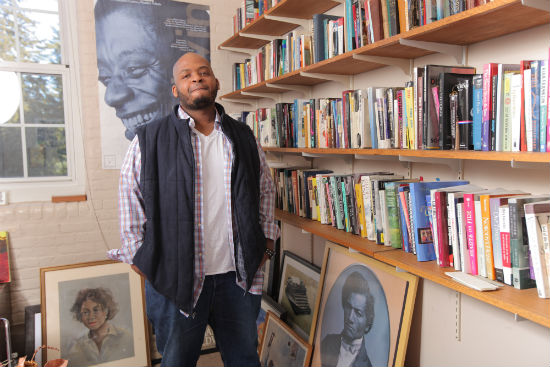
The first time I encountered Kiese Laymon‘s writng was–I believed–via his debut novel Long Division. Long Division is a thrilling, sometimes funny, novel that eludes easy description: there are elements of time travel, metafiction, and commentary on race, America, and the South’s troubled history all woven together. For my money, Laymon’s approach here reminds me of Flann O’Brien: both are willing to elude easy classification in their work and take the reader to unexpected places. When I read Laymon’s essay collection How to Slowly Kill Yourself and Others in America, I realized I’d read one of the pieces (an essay on Kanye West) a few years earlier, and had been impressed with it then as well. With news of two forthcoming books on the horizon, I checked in with Laymon via email to learn more about them, his work in fiction and essays, and more.
Last year saw the release of your novel and your essay collection. Did you find that the proximity of one to the other affected how people were reacting to each of them?
That’s a great question. I wanted to come out with the collection first since people knew me most for my essays, but Long Division got plenty of attention and that attention helped us zoom through the first printing of the essay collection. I think we sold like 12,000 books in the first 6 months of publication. That’s pretty good for an indy press.
The way the narratives paralleled one another in Long Division impressed me, and the way that it didn’t particularly hew to expectations of either time-travel stories or metafiction impressed me even more. How much did you structure the two narratives in advance over the course of writing the novel?
Super question. Initially, the books were going to be sold separately so I had to literally write both books. Then my editor really wanted the narratives to be interspersed so I had to cut some stuff and really focus on the transitions in and out. It’s not at all perfect but I’ll get better next time.
A number of your essays are structured as dialogues; what first drew you to this form?
The essay book and the novel are slightly obsessed with dialogic art and art communities. I’m interested in voice but I’m much more interested in listening. The problem with our national lit isn’t just that it’s often written from the same voice; it’s written often to the same listeners. But if you changed the listeners, you change the art. Literally. So I wanted to write two books that were committed to broadening the reach of our national lit by telling different kinds of secrets in several different voices.
You just announced that your next two books would come out on Bloomsbury. Is this a similar case of one novel and one work of nonfiction?
Yep, one novel and one work of nonfiction. The nonfiction is more of a memoir, weight loss hybrid thing. And the novel is just wow.
Do you see yourself balancing the two as you continue to work on new books?
I need to work on two at a time for my sanity. When I get too deep in one, I can always turn to the other one for a breath.
Reading “You Are the Second Person,” it seemed to collect almost every potential anxiety a writer might have about working with an editor or publisher, and seemed like one of the most harrowing experiences a writer could endure. When you wrote that and got it out into the world, what was the feeling like?
When I let that piece out to the world, I felt safe actually. I felt like this terrifying secret I’d been sitting on for so long was now out. I didn’t feel shame anymore. I felt way more connected to the rest of the readers and writers in the world.
Follow Vol. 1 Brooklyn on Twitter, Facebook, Google +, our Tumblr, and sign up for our mailing list.
